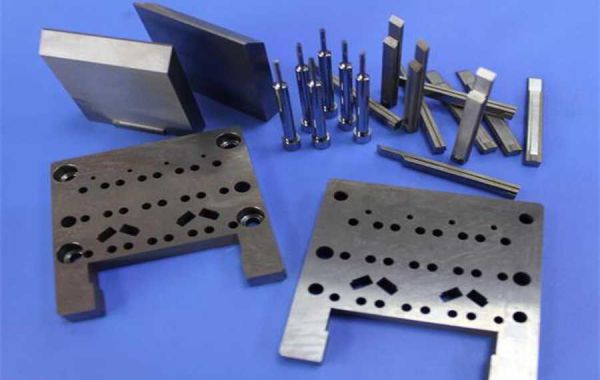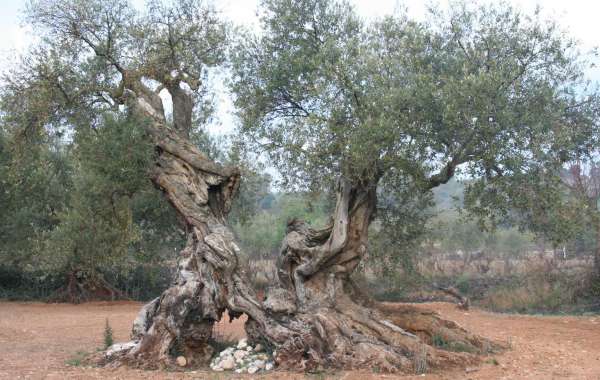1 Scope This standard specifies the product classification, technical requirements, test methods, inspection rules, marking, packaging, transportation and storage of ferrule-type copper pipe joints for aluminum-plastic composite pipes for construction (hereinafter referred to as pipe joints). This standard applies to pipe joints of aluminum-plastic composite pipe piping systems with an outer diameter of 12 to 32 mm.
2 Reference standards The provisions contained in the following standards constitute provisions of this standard through reference in this standard. When this standard is published, the versions indicated are valid. All standards are subject to revision and parties using this standard should explore the possibility of using the latest version of the standard listed below. GB/T 196-1981 Basic dimensions of ordinary threads (diameter 1~600mm) GB/T 197-1981 Tolerances and fits of ordinary threads (diameter 1~355mm) GB/T 1176-1987 Technical conditions for cast copper alloys GB/T 1184-1996 Unindicated tolerance values for shape and position tolerances GB/T 1804-1992 Unindicated tolerances for general tolerances for linear dimensions GB/T 2828-1987 Batch-by-batch inspection sample counting procedures and sampling tables (applicable to inspection of consecutive batches) GB/T 5232 —1985 Processed brass—Chemical composition and product shape GB/T 7307—1987 Pipe threads sealed with threads GB 15558.2—1995 Buried polyethylene pipe fittings for gas use GB/T 15820—1995 Tensile resistance of polyethylene pressure pipes and pipe fittings Pull-out test GB/T 17219-1998 Safety evaluation standard for drinking water transmission and distribution equipment and protective materials GB/T 2811-1996 Rubber material for lip seals of rotating shafts
3 product categories
3.1 According to the external type of pipe joints, they are divided into: S-type (straight-through), L-type (elbow), T-type (tee), and D-type (plug).
3.2 Pipe joints are divided according to their uses: For gas use - the working pressure is 0.4MPa; For cold and hot water - the working pressure is 1.0MPa. The color of the sealing ring of the pipe joint is used as a way to distinguish its purpose.
3.3 The structure and basic dimensions of pipe joints are shown in Appendix A (standard appendix).
3.4 Product Marking
3.4.1 Product model
3.4.2 Marking examples a) A reducing straight-through pipe joint with an outer diameter of 20mm and an outer diameter of 25mm at one end of the joint; a reducing straight-through pipe joint with an inner diameter of 12mm and an outer diameter of 16mm at the other end of the joint, marked as: Reducing straight-through pipe joint S2025×1216 CJ /T ××××—×××× b) An equal-diameter elbow with an inner diameter of 16 mm and an outer diameter of 20 mm, marked as: Elbow L1620 CJ/T ××××—×××× c) Two ends of the joint The nominal diameter is 16mm, the outer diameter of the pipe is 20mm, the intermediate joint is a G1/2 internal thread internal tee pipe joint, marked: Internal tee tee joint T1620×1/2F×1620 CJ/T ××× ×—×××× d) The inner diameter of the four-way joint pipe is 16mm, and the outer diameter of the pipe is 20mm. The mark is: Four-way pipe joint X1620 CJ/T ××××—×××× 3.5 Specifications of the pipe joint The outer diameter of the pipe is indicated. For example, the specification of the internal tooth tee with model T1620×1/2F×1620 is 20×1/2×20.
4 Technical requirements
4.1 Materials 4.1.1 The main parts and materials are shown in Table 1 (omitted).
4.1.2 The color of the sealing ring on the gas pipe joint is yellow to distinguish it from pipe joints for other purposes.
4.1.3 The gasket that isolates the aluminum layer at the end of the pipe from the joint body is made of plastic.
4.2 Appearance 4.2.1 Pipe joints should be smooth, uniform in color, with sharp edges blunt, and there should be no cracks or unevenness. The castings should be free of pores, slag inclusions and blisters.
4.2.2 Models, specifications, and codes should be clearly marked.
4.2.3 The threads should be free of breaks, bruises and burrs. 4.3 Parts Processing
4.3.1 Products should be manufactured according to drawings and technical documents approved by prescribed procedures.
4.3.2 Except for the mating parts, the wall thickness shall not be less than 2.4mm.
4.3.3 The basic dimensions of ordinary threads shall comply with the provisions of GB/T 196. The thread tolerance complies with the requirements of GB/T 197, the internal thread is 6H and the external thread is 6g.
4.3.4 Non-thread-sealed pipe threads shall comply with the provisions of GB/T 7307, and the external thread shall be grade A.
4.3.5 The surface roughness of the external thread side is , and the surface roughness of the internal thread side is .
4.3.6 General tolerances for linear dimensions: cutting dimensions are in accordance with GB/T 1804m level.
4.3.7 Geometric tolerances without tolerance values shall be in accordance with GB/T 1184K level.
4.3.8 When assembling the pipe joint, the threaded section should rotate freely without clamping.
4.3.9 In order to increase the strength of the nut, in addition to the extruded copper material, the copper nut blanks should be hot forged.
4.3.10 All castings should be hot forged after sand cleaning before processing.
4.3.11 The outer surface of the pipe joint should be surface treated to prevent rust.
4.3.12 The sealing ring should adopt a wedge-shaped cross-section. The number of sealing rings is allowed to be one or two.
4.4 Performance requirements
4.4.1 Connection reliability The pipe joint and the connected pipe should be connected reliably. At normal temperature, they should be able to withstand the connection and pull-out force in Table 2 (omitted). The connection part should not be loose or broken for 60 minutes, and the parts should have no cracks or damage. .
4.4.2 Sealing At normal temperature, the pipe joint sealing test pressure is 1.0MPa, and it must be maintained for 3 minutes without leakage.
4.4.3 Static internal pressure strength When pipe joints are subjected to static internal pressure strength tests in accordance with the provisions in Table 3 (omitted), the parts must not be damaged or deformed, and must not leak.
4.4.4 Hydraulic burst The pipe joint assembly should meet the minimum burst requirements listed in Table 4 (omitted). The pipe joint should not break when the test time is 60 seconds.
4.4.5 Thermal Cycle The assembly composed of pipe joints and pipes is subjected to 1000 thermal cycles under an internal pressure of 690kPa ± 690kPa and an external temperature between 82 and 15°C. The assembly should not separate or leak.
4.4.6 Gas component resistance performance As a pipe joint for gas, the gas component resistance performance should comply with the requirements of GB 15558.2.
4.5 Hygiene requirements As a pipe joint for transporting drinking water, the drinking water must not be subject to secondary pollution, and the original water quality hygiene requirements should be maintained. The pipe joints should comply with the regulations of GB/T 17219.
5 Test methods
5.1 Material Inspection Raw materials shall be accepted according to quality assurance documents. Chemical composition and mechanical properties inspection should be carried out during type inspection. The inspection shall be in accordance with the relevant standards in Table 1 (omitted).
5.2 Appearance inspection The appearance of the pipe joint shall be inspected visually. 5.3 Connection reliability test 5.3.1 The tested sample is installed according to the manufacturer's instructions. The upper end of the connected pipe is 300mm.
5.3.2 Carry out the test in accordance with the provisions of GB/T 15820. The pull-out force shall be in accordance with the provisions of Article 4.3.1 for 60 minutes. Check whether the connections are loose and broken, and whether the parts are cracked or damaged.
5.4 Sealing test Install the pipe joint on a special testing machine, immerse the pipe joint in the main water tank at normal temperature, slowly introduce 1MPa oil-free compressed air, maintain the pressure for 3 minutes, and check whether there is leakage.
5.5 Static internal pressure strength test
5.5.1 Test equipment Pressure testing machine, constant temperature bath.
5.5.2 Sample Pipe joints and pipes are installed into a semi-enclosed body according to the manufacturer's instructions.
5.5.3 Test steps
a) Fill the installed pipe joint assembly with water, control the temperature of the constant temperature bath to the test temperature in Table 3 (omitted), and immerse the sample in the water bath for 1 hour;
b) Connect the sample to the pressure testing machine, exhaust the air, and pressurize evenly to the static internal pressure specified in Table 3 (omitted). During the entire test process, the sample should be immersed in the constant temperature bath medium and should not touch the bath wall;
c) Maintain the static internal pressure for 10 hours during the test, and check whether the joints are leaking and whether the parts are damaged or deformed.
5.6 Hydraulic burst test
5.6.1 Test equipment Thermostatic bath and pressure testing machine.
5.6.2 Sample Pipe joints and pipes shall be installed into a semi-enclosed body in accordance with the manufacturer's instructions for use. The length of the pipe shall not be less than 300mm.
5.6.3 Test steps
a) Fill the installed pipe joint assembly with water, connect it to the pressurized pipe of the pressure testing machine, and discharge the air;
b) Control the temperature of the constant temperature bath within the range of 23℃±2℃, and immerse the sample in it for 1 hour;
c) Turn on the pressure pump and pressurize evenly to the pressure specified in Table 4 (omitted). During the entire test process, the test piece should be immersed in the constant temperature bath medium and cannot touch the tank wall;
d) Pressurize for 60 seconds and check whether the pipe joints are broken.
5.7 Thermal cycle test
5.7.1 Test equipment
a) The air compressor can maintain the internal pressure of the sample at 690kPa±690kPa without oil pollution;
b) The immersion test device can automatically immerse the sample in a temperature-controlled water bath that can provide continuous water temperatures of 82℃±2℃ and 15℃±2℃ at specified time intervals.
5.7.2 Sample Pipe joints and pipes are installed into a semi-closed body according to the manufacturer's instructions. The length of the connected pipe is 100~200mm.
5.7.3 Test steps Use compressed air to pressurize the component to 690kPa±690kPa, immerse it in water at 15℃±2℃, check for leaks, and then cycle








